Bitterns and Egrets
Displayed in the first gallery are Bitterns and Egrets that belong Ardeidae (Herons, Bitterns and Egrets) family, see Taxonomy note below. This page also features photo essays of Bittern and Little Egret behaviour together with an image gallery of other species depicting feeding, hunting and other behaviours.
Bitterns and Egrets
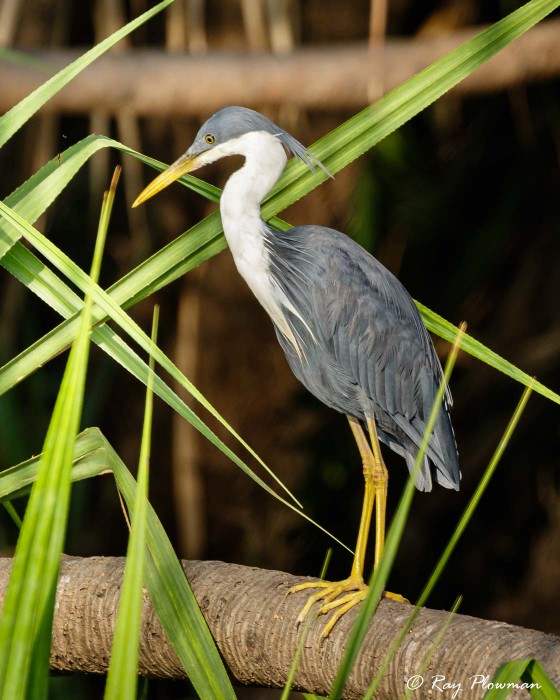
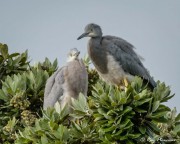
Bittern and Egret Notes
All featured species are ‘Red List 2019’ assessed as ‘Least Concern’. Unlike bitterns, egrets are not generally sexual dimorphic although some species do exhibit size dimorphism.
Eastern and Western Cattle Egret subspecies feature in the gallery, the latter in breeding and non-breeding plumage. The behaviours page features an Eastern Cattle Egret in breeding plumage.
The Great Egret (Ardea alba) is a cosmopolitan species with four recognised subspecies. Two photos feature the Eastern (ssp modesta) a non-breeding adult with a yellow bill and breeding adult with a black-bill.
Self-introduced in New Zealand from Australia the White-faced Heron (Egretta novaehollandiae) is now a commonly seen resident. I came across this species on both the north and South Island hunting on the shoreline.
Three bitterns feature in the gallery all exhibit plumage dimorphism. The male Yellow Bittern (Ixobrychus sinensis) is a uniform dull yellow above, buff below with a Blue-grey Crown while the female has a streaked brown head, neck, and breast. A female Schrenck’s Bittern (Ixobrychus eurhythmus) and a male Cinnamon Bittern (Ixobrychus cinnamomeus) also features.
Bittern Behaviour
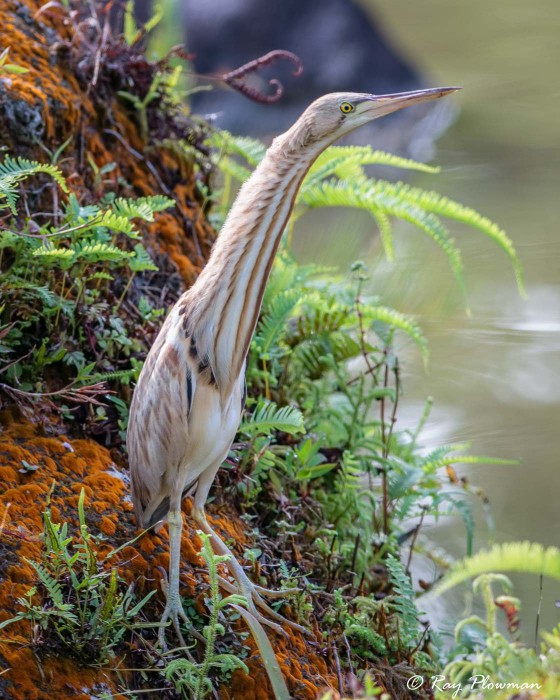
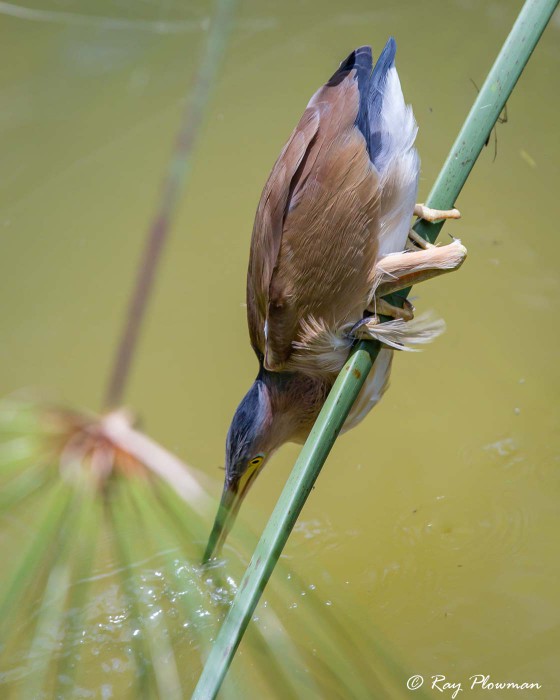
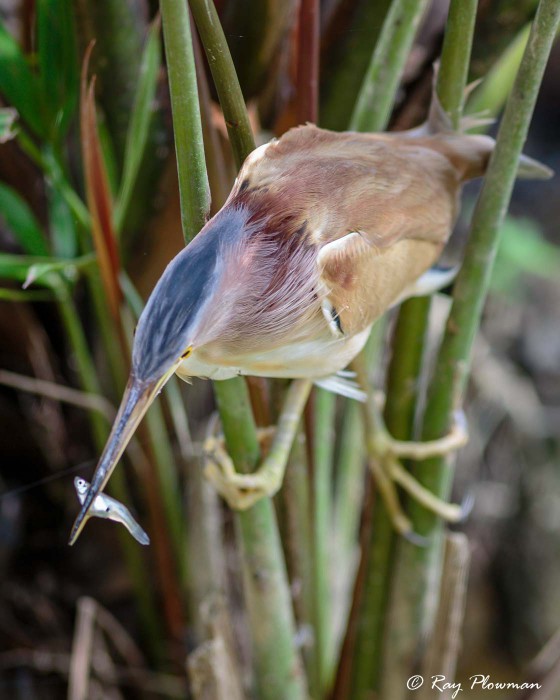
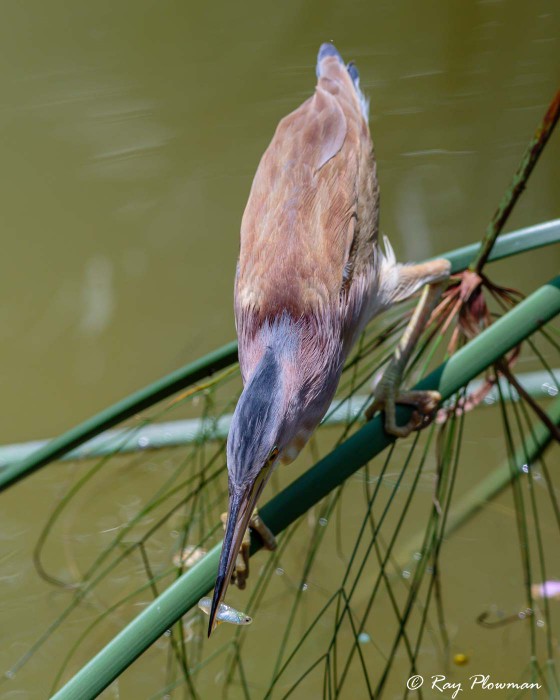
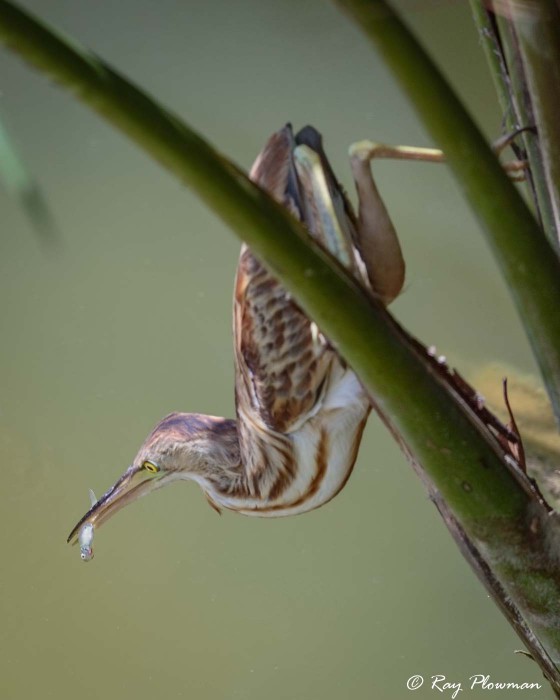
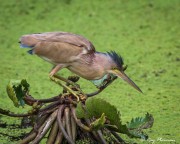
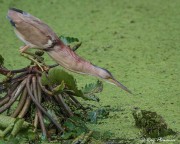
Bittern Behaviour Notes
Like most members of the heron family, bitterns adopt different postures: upright with the head and neck extended when startled or to look for food; erect (bittern posture) with the bill and neck vertical and crouched with the head and neck withdrawn.
Photos show a female Yellow Bittern startled with stretched neck and puffed up feather posture. Bitterns are incredibly agile, a sequence of images show a male gripping palm stems, striking prey in the water and capturing a fish in its bill. An immature image shows agility in catching fish. A sequence of five images depicts preening, observing, poised ready to strike, caught fish in its bill and swallowing prey. A slider image on ‘Birds’ page features a bittern stretched almost horizontally while gripping palm fonds.
Yellow Bitterns hunt fish, amphibians and insects. They are resident over a broad range of South East Asia, Indonesia, and native in Singapore. They are sexually dimorphic; males that have uniform dull yellow above and buff below; females have a streaked brown crown, neck and breast. Immatures have significantly more streaking.
Schrenck’s Bittern hunts similar prey to the Yellow Bittern. I photographed this species in the Wetland Centre pond at Sungei Buloh in Singapore where it is a winter visitor.
Little Egret Behaviour
Little Egret Behaviour Notes
Little Egrets do not take up a classical heron static stance when hunting but flutter around over the water and in the water to stir up the mud, presumably to scare the fish. They also fly short distances and then pounce on prey, sometimes in less than a second or two. They also shade the water with their wings. The gallery shows some of this behaviour, including one bird devouring a medium-sized fish.
Egret Behaviour
Egret Behaviour Notes
The gallery is an ecliptic mix of egret images. The first sequence shows an Eastern Cattle Egret in Kakadu National Park perched on a feral water buffalo going from relaxed to classic stretched neck pose when prey is spotted. Other images show little blue heron foraging and capturing prey and snowy and not-so Snowy Egret at Orange Valley Mudflats in Trinidad.
Mixed flock photos show Great and Snowy Egrets at Caroni Swamp and Little and Great Egrets flying at Sungei Buloh Wetland Reserve.
Bittern and Egret Taxonomy
The Core Waterbirds Webpage describes the higher-level taxonomy for the Ardeidae (Herons, Bitterns, and Egrets), in Ardeiformes order, part of the Aequornithes (Core Waterbirds) clade.
Two photo albums feature the Ardeidae (Herons, Bitterns and Egrets) family. This album displays three heron groups: (i) Genus Egretta (Egrets) and (ii) Genus Bubulcus Cattle Egret) and (iii) subfamily Botaurinae (Bitterns).
There are Proposed changes to elevate subspecies Intermediate Egret [Plumed] (Ardea intermedia plumifera) to full species status Plumed Egret (Ardea plumifera), Birdlife International and IUCN Red List refer. Most other authorities do not accept the change.







































